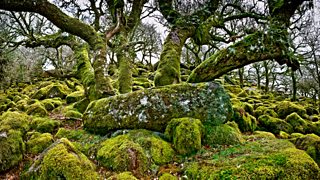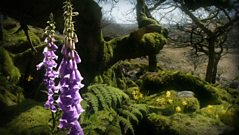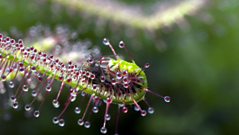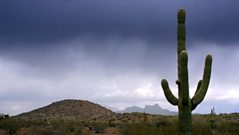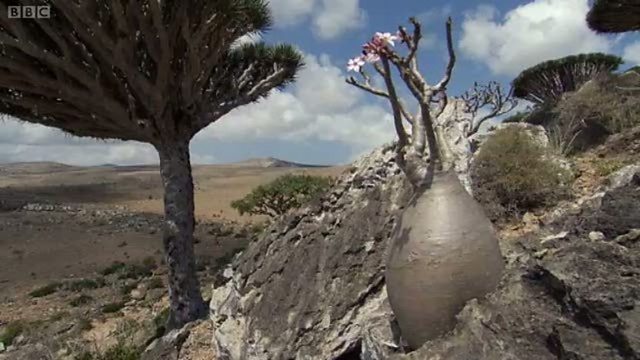
Dragon's blood and roses
The true source of Dragon’s blood, is from a tree grown on the Socotra archipelago, south of the Arabian peninsula. The blood red sap has had many uses over time, from medicinal treatments to dyes and toothpaste and it is still used as a varnish for violins. Once widely distributed, the tree is now listed as vulnerable by the IUCN. There are several possible reasons for its decline: overgrazing, loss of habitat through human encroachment, over-use of the tree for rope and traditional beehives, and changes in the climate of the archipelago as a whole.
The key to the successs of the dragon's blood tree lies in its bizarre shape. It lives on the mountain tops and though the soil here is thin, there are compensations. Occasional morning mists sweep across the high ground and condense on the skyward-pointing waxy leaves. The droplets gather and run down to the centre of the trunk and to its roots. Water is so precious, that the tree can't afford to waste any. Drops that do escape and fall to the ground are not totally lost. The tree's densley packed crown shades the ground like a parasol and allows the water time to sink into the ground. It also shades the root system below.
Another plant shares this parched desert, but survives in a very different way. In really harsh conditions it jettisons its leaves to avoid water loss. Strangely it also chooses this time to flower. Its bulbous trunk is like a barrel and stores water all year round. The desert rose is so hardy it can grow out of bare rock. It might seem that conditions can't get much harder for a plant than here.
Duration:
This clip is from
Featured in...
![]()
±«Óãtv Nature
Be captivated, informed and inspired by the world's wildlife.
![]()
On the Brink
A collection of clips highlighting some of the most vulnerable animals and plants on Earth.
![]()
The Wildlife of Life
Discover the wildlife of the Life series.
More clips from Plants
-
![]()
Woodland timelapse
Duration: 04:14
-
![]()
Woodland timelapse
Duration: 01:04
-
![]()
Meat-eating plants
Duration: 02:22
-
![]()
Sizing up saquaros
Duration: 02:31
More clips from Life
-
![]()
Woodland timelapse—Plants
Duration: 04:14
-
![]()
Woodland timelapse—Plants
Duration: 01:04
-
![]()
Partners for life—Birds
Duration: 02:22
-
![]()
Dancing dragons—Fish
Duration: 03:57
